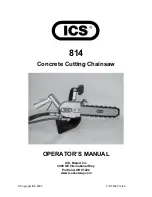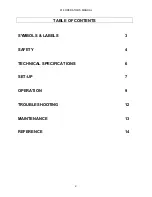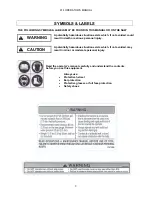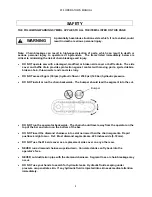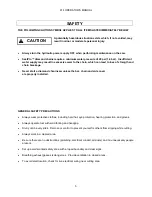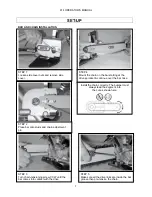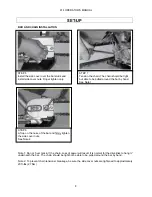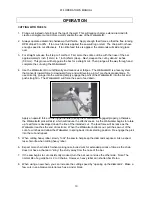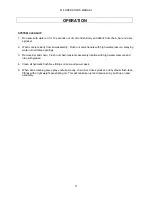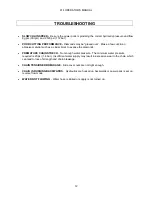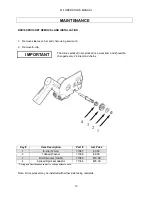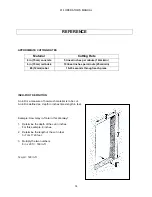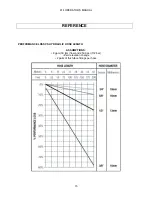
814 OPERATOR’S MANUAL
10
OPERATION
CUTTING WITH THE 814
1. Plunge cut instead of starting at the top of the wall. This will reduce chatter, extend diamond life,
create a straighter cut and more quickly enable the use of the Wallwalker®.
2. Always operate a diamond chainsaw at full throttle. Apply enough feed force so that the free running
RPM drops 20 to 30%. If too much force is applied, the saw will lug or stall. The chain will not have
enough speed to cut effectively. If too little feed force is applied, the diamonds will skid and glaze
over.
3. For straight cuts use the “step cut” method. First score the entire cut line with the nose of the bar
approximately ½ inch (12mm) to 1 inch (25mm) deep. Next, deepen the cut by about 2 inches
(50 mm). This groove will help guide the bar for a straight cut. Then plunge all the way through and
complete the cut using the Wallwalker®.
4. Use the Wallwalker® to cut efficiently and reduce user fatigue. The Wallwalker® is a lever system
that converts inward force to downward force and will develop a 4-to-1 mechanical advantage. To
use correctly, plunge into the wall and simply engage the point of the Wallwalker® into the cut and
push straight in. The Wallwalker® will force the saw to feed down.
Apply an upward force on the trigger handle to keep the Wallwalker® engaged properly, otherwise
the Wallwalker® pick will skid, which will reduce the effectiveness. As the Wallwalker begins to rotate
up, feed force is developed down the line of the intended cut. The feed force will increase as the
Wallwalker reaches the end of its stroke. When the Wallwalker bottoms out, pull the saw out of the
cut a few inches and allow the Wallwalker to spring back into its starting position. Re-engage the pick
into the cut and repeat.
5. When cutting heavy rebar, slowly ”rock” the saw to help keep the diamonds exposed. Also, expect
less chain life when cutting heavy rebar.
6. Expect more chain stretch when making nose buried cuts for extended periods of time as the chain
does not have a chance to “sling” the slurry away from the nose of the bar.
7. If the saw begins to cut consistently crooked, turn the bar over and use the other side. Note: The
normal life of a guide bar is 2 to 3 chains. However, heavy rebar can shorten bar life too.
8. When using a new chain, you can increase the cutting speed by “opening up the diamonds”. Make a
few cuts in an abrasive material such as a cinder block.

